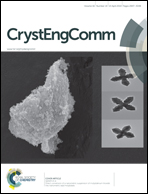The controlled transition-metal doping of SnO2 nanoparticles with tunable luminescence
Abstract
SnO2 nanoparticles doped with transition metals (V, Cr, Mn) have been synthesized by both the hydrothermal method (HDT) in a basic media and the liquid mixed method (LQM) based on the Pechini method. Nanocrystalline particles obtained via a liquid mixed technique show a well-defined chemical composition and an average size of 6 nm, with a high degree of both crystallinity and chemical homogeneity. Nanoparticles prepared via a hydrothermal method exhibit a high dispersion in size as well as agglomeration effects. As the LQM demonstrates advantages with respect to the HDT, a more detailed investigation has been carried out on the SnO2 nanoparticles doped with V, Cr and Mn grown by this method. The microstructure of the materials was elucidated by means of X-ray Diffraction (XRD), Selected-Area Electron Diffraction (SAED), and High-Resolution Transmission Electron Microscopy (HRTEM). Luminescence from undoped and doped SnO2 nanoparticles was characterized by cathodoluminescence (CL). The luminescence studies demonstrate a strong dependence of CL signals with transition metal doping, thus inducing red, green or orange emissions when doping with Cr, V or Mn respectively.


 Please wait while we load your content...
Please wait while we load your content...